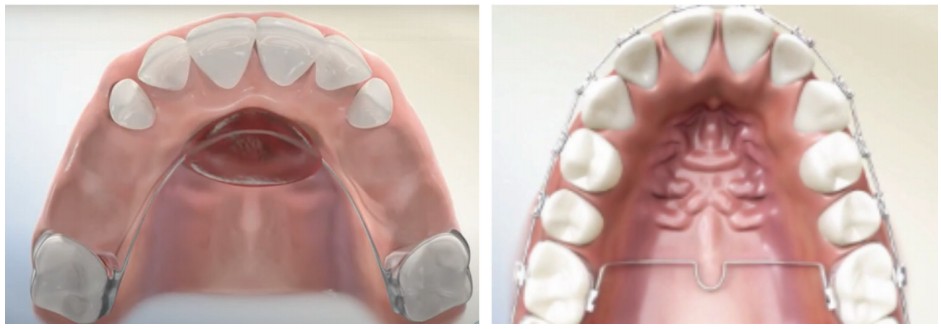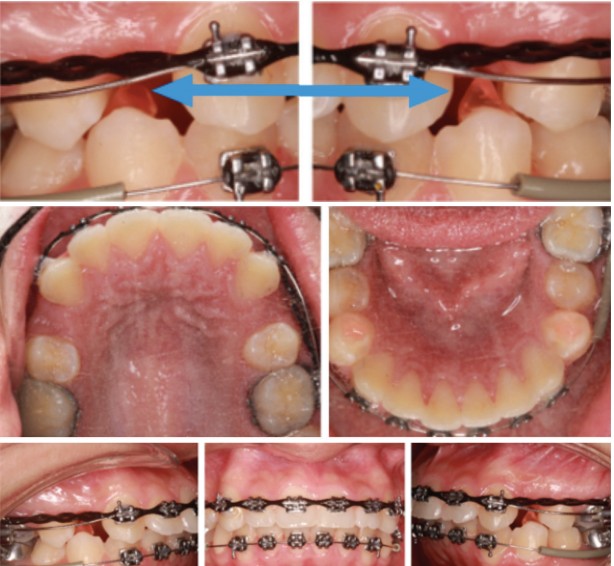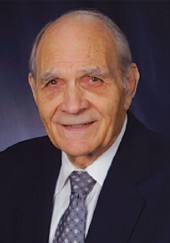Drs. Larry W. White and Francesca Scilla Smith use Anchorage Posterior Occlusal Guides for maxillary molar anchorage preservation.
Drs. Larry W. White and Francesca Scilla Smith discuss a technique for maxillary molar anchorage preservation
Maxillary molar anchorage has perplexed orthodontists since the beginning of premolar extraction therapies. Every clinician knows from sad experience that maxillary molars easily displace and rotate mesially when challenged with mesial space and force. Obvious and early remedies — e.g., transpalatal arches,1 Nance arches,2 intermaxillary Class II elastics,3 and headgears4 (Figure 1) — proved incapable of providing reliable molar anchorage. More recently, the use of miniscrews has enjoyed some popularity although they require local anesthesia while also bringing more expense and often equivocal stability. Melsen and Fiorelli5 have advocated the use of occlusal anchorage enhancements using Triad® light-cure gel (Dentsply Sirona, Charlotte, North Carolina) (Figure 2).


Recently, a variation of the Melsen and Fiorelli occlusal pads has proven effective and doesn’t require the occlusal coverage of mandibular molars and premolars, while providing a more defined stop for the maxillary second premolar when maxillary first premolars have been extracted (Figures 3 and 4). This places an occlusal stop solidly against the maxillary second premolar and, as seen, prevents the maxillary posterior teeth from moving forward. For want of a proper name, these are called Anchorage Posterior Occlusal Guides, aka, APOGs.


The APOGs are made using the Bite Ramp Mini Mold™ (Ortho Arch Company, Schaumburg, Illinois). The mold is filled with the Triad gel and applied to the distal occlusal surface of the mandibular first premolar and light-cured. If upon removing the mold, the APOG doesn’t touch the maxillary second premolar, a small amount can be applied to the scaffolding of the bite ramp until it makes contact with the upper tooth. If the mold touches prematurely, it is easily smoothed to fit with an air turbine bur.
Clinicians can apply APOGs easily and quickly with minimum armamentarium, small cost, and no laboratory involvement, while using the ever-present occlusion as reinforcement for posterior maxillary anchorage in maxillary premolar extraction patients.
After reading Anchorage Posterior Occlusal Guides, check out Dr. Larry White’s 50-year orthodontic career here: https://orthopracticeus.com/sharing-a-fika/.
- Melsen B, Bonetti G, Giunta D. Statically determinate transpalatal arches. J Clin Orthod. 1994;(10):602-606.
- Nance HN. The limitations of orthodontic treatment; mixed dentition diagnosis and treatment. Am J Orthod. 1947;33(4):177-223.
- Kesling PC. The Tip-Edge PLUS® Guide and the Differential Straight-Arch® Technique. 6th ed. TP Orthodontics: La Porte, IN; 2006.
- Melsen B. Effects of cervical anchorage during and after treatment: an implant study. Am J Orthod. 1978;73:(526-540).
- Melsen BG, Fiorelli G. Biomechanics in Orthodontics. 3rd ed. Aarhus: Denmark; 2013.
Stay Relevant With Orthodontic Practice US
Join our email list for CE courses and webinars, articles and mores

 Francesca Scilla Smith, DDS, MS, was born and raised in Arezzo, Italy. She graduated summa cum laude at the University of Florence Dental School and obtained her orthodontic degree from Nova Southeastern University College of Dental Medicine in Fort Lauderdale, Florida, with a master thesis on conventional and digitally driven indirect bonding. Dr. Scilla Smith practices orthodontics in Dallas, Texas.
Francesca Scilla Smith, DDS, MS, was born and raised in Arezzo, Italy. She graduated summa cum laude at the University of Florence Dental School and obtained her orthodontic degree from Nova Southeastern University College of Dental Medicine in Fort Lauderdale, Florida, with a master thesis on conventional and digitally driven indirect bonding. Dr. Scilla Smith practices orthodontics in Dallas, Texas. Larry White, DDS, MSD, FACD, is a graduate of Baylor Dental College and Baylor Orthodontic Program and now has an orthodontic practice in Dallas, Texas.
Larry White, DDS, MSD, FACD, is a graduate of Baylor Dental College and Baylor Orthodontic Program and now has an orthodontic practice in Dallas, Texas.
